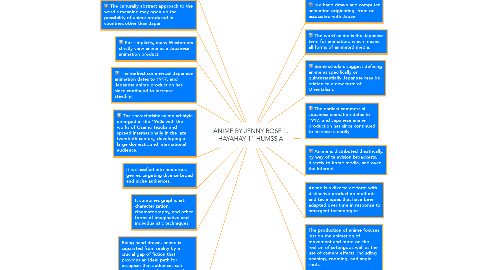ANIME BY JENNY ROSE L. HAYAHAY 11 HUMSS A
by jennyrose hayahay

1. is a hand drawn and computer animation originating from or associated with Japan.
2. The word anime is the Japanese term for animation, which means all forms of animated media.
3. Outside Japan, anime refers specifically to animation from Japan or as a Japanese-disseminated animation style often characterized by colorful graphics, vibrant characters and fantastical themes.
4. The culturally abstract approach to the word's meaning may open up the possibility of anime produced in countries other than Japan
5. For simplicity, many Westerners strictly view anime as a Japanese animation product.
6. The earliest commercial Japanese animation dates to 1917, and Japanese anime production has since continued to increase steadily.
7. The characteristic anime art style emerged in the 1960s with the works of Osamu Tezuka and spread internationally in the late twentieth century, developing a large domestic and international audience.
8. It is classified into numerous genres targeting diverse broad and niche audiences.
9. Some scholars suggest defining anime as specifically or quintessentially Japanese may be related to a new form of Orientalism.
10. The earliest commercial Japanese animation dates to 1917, and Japanese anime production has since continued to increase steadily.
11. Anime is distributed theatrically, by way of television broadcasts, directly to home media, and over the Internet.
12. Anime is a diverse art form with distinctive production methods and techniques that have been adapted over time in response to emergent technologies.
13. The production of anime focuses less on the animation of movement and more on the realism of settings as well as the use of camera effects, including panning, zooming, and angle shots.
14. It combines graphic art, characterization, cinematography, and other forms of imaginative and individualistic techniques.
15. Being hand-drawn, anime is separated from reality by a crucial gap of fiction that provides an ideal path for escapism that audiences can immerse themselves into with relative ease.[9] Diverse art styles are used and character proportions and features can be quite varied, including characteristically large emotive or realistically sized eyes.


